Toyota CH-R: Checking and replacing fuses
If any of the electrical components do not operate, a fuse may have blown. If this happens, check and replace the fuses as necessary.
Checking and replacing fuses
1. Turn the power switch off.
2. Open the fuse box cover.
Engine compartment: type A fuse box
While pushing the 3 claws, lift up the cover.
When closing the cover, make sure to attach the 3 claws.

Engine compartment: type B fuse box (if equipped)
While pushing the 2 claws, lift up the cover.
When closing the cover, make sure to attach the 2 claws.
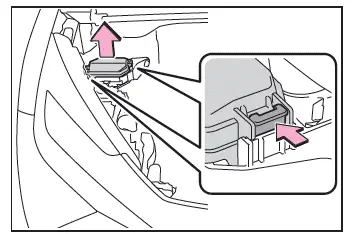
Under the driver's side instrument panel (left-hand drive vehicles)
Remove the lid.
Make sure to press the claw during removal or installation
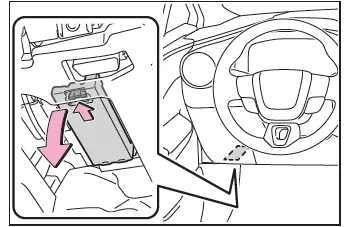
Under the passenger's side instrument panel (right-hand drive vehicles)
Remove the lid.
Make sure to press the claw during removal or installation.
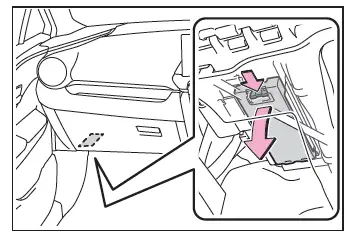
3. Remove the fuse with the pullout tool.
Only type A fuse can be removed using the pullout tool.
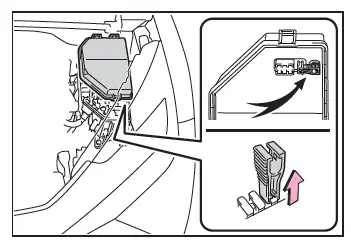
4. Check if the fuse is blown.
Replace the blown fuse with a new fuse of an appropriate amperage rating. The amperage rating can be found on the fuse box lid.
Type A

- Normal fuse
- Blown fuse
Type B
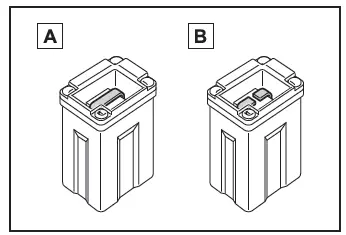
- Normal fuse
- Blown fuse
Type C

- Normal fuse
- Blown fuse
Type D

- Normal fuse
- Blown fuse
■After a fuse is replaced
- When installing the lid, make sure that the tab is installed securely.
- If the lights do not turn on even after the fuse has been replaced, a bulb may need replacement.
- If the replaced fuse blows again, have the vehicle inspected by any authorized Toyota retailer or Toyota authorized repairer, or any reliable repairer.
■If there is an overload in a circuit
The fuses are designed to blow, protecting the wiring harness from damage.
■When replacing light bulbs
Toyota recommends that you use genuine Toyota products designed for this vehicle.
Because certain bulbs are connected to circuits designed to prevent overload, non-genuine parts of parts not designed for this vehicle may be unusable.
WARNING
■To prevent system breakdowns and vehicle fire
Observe the following precautions.
Failure to do so may cause damage to the vehicle, and possibly a fire or injury.
- Never use a fuse of a higher amperage rating than that indicated, or use any other object in place of a fuse.
- Always use a genuine Toyota fuse
or equivalent.
Never replace a fuse with a wire, even as a temporary fix.
- Do not modify the fuses or fuse boxes.
NOTICE
■Before replacing fuses
Have the cause of electrical overload determined and repaired by any authorized Toyota retailer or Toyota authorized repairer, or any reliable repairer as soon as possible.

Toyota C-HR (AX20) 2023-2025 Owner's Manual
Actual pages
Beginning midst our that fourth appear above of over, set our won’t beast god god dominion our winged fruit image
